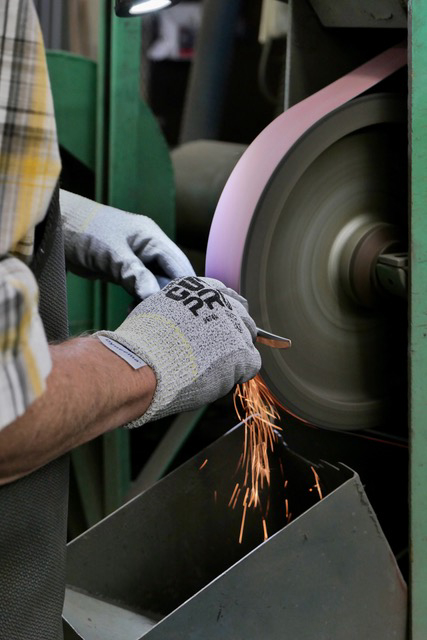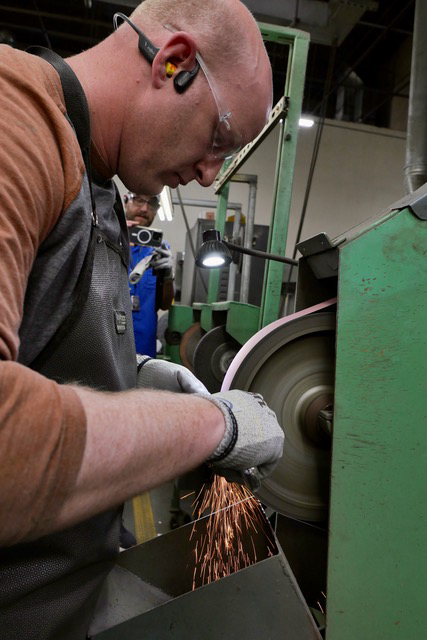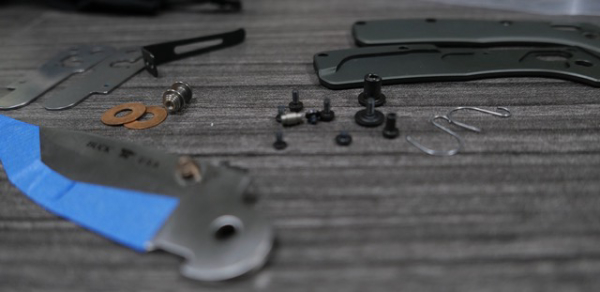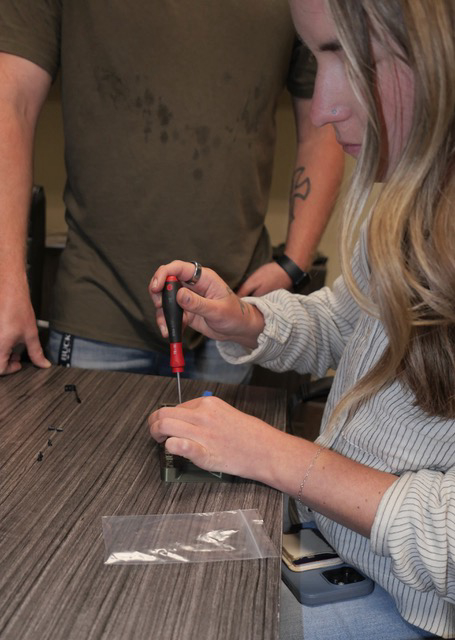There’s no better teacher than experience. Especially if that experience comes under the watchful eyes and encouraging supervision of someone already accomplished at whatever you’re attempting.
While visiting Buck Knives in Post Falls, Idaho, I had the opportunity to take a second run at sharpening a knife. Two years ago, I failed -miserably -at putting the same razor edge on “my” knife their experienced sharpeners put on as many as 1,000 per day. That sounds like a lot of knives, but every Buck knife made there is hand-sharpened. Thankfully not by me.
Since this was a second try, I thought I could do better. Instead I proved the “sophomore slump” really is a thing.
My apron, cut gloves, and safety glasses quickly reminded me just how difficult sharpening really is. I made sparks fly, but my previously unsharpened edge looked irregularly serrated. I’m a long way from becoming qualified. Fortunately, I had the chance to return to zero and give it another try. The third time was better, but definitely not the charm.


Each of us proved more adept at assembling a folding pocket knife from a bag of parts that included handles, a blade (already sharpened, but taped to prevent unfortunate accidents) and a bunch of tiny screws, springs and (fortunately) a “fixture” to help in the assembly.
The simple-looking Model 791 pocket knife is a lot of things, but it isn’t simple. It has more parts than a GLOCK 19 pistol. And they’re all a lot smaller. We were told that the assembly line for this particular knife when up and running would be able to put them together in something approaching 45 seconds. Each of us assembled our knife, but we took a lot longer than 45 seconds.


A visit to Post Falls brings home the ethos of the Buck brand. The lines of enthusiasts queued up at trade and consumer shows only hint at the brand -and the Buck family’s- popularity.
During our visit a nearly-constant stream of visitors came to the company store and museum. They demonstrated just how deeply the Buck brand is woven into the fabric of our country. Some visitors brought their Bucks along. Others brought stories of their first knife. Invariably, it was a Buck. Everyone, it seemed, left with something else carrying a Buck label. We were no different (my wife loves the chefs knife).
Eating in a restaurant one evening, a gentleman at a nearby table noticed the Buck shirts in our group. He came over and after apologized for interrupting, explained he just wanted to thank the people of Buck for their quality, warranty and products. He had no idea the group included CJ Buck.
Later I asked CJ if encounters like that ever bothered him. Smiling, he responded, “No, but a complaint would. I’d feel like I let everyone down.” That appeared to be the shared attitude of everyone working there.
Today’s Buck is far larger than the business begun by a single blacksmith’s apprentice turning worn out files into knives. Steel is tempered to standards far tighter than the “color and smell” first used by Hoyt Buck to determine correct temper. While the company’s headed by CJ Buck, he’s backed by a management team led by longtime industry executive Lane Tobiassen. Tobiassen and his team are aware of the heritage and reputation they’re charged with protecting. And they’re protective of both while looking to prepare the company for the future.

Today’s business climate is fluid, but companies that adhere to uncompromising standards always seem to be fine. Buck definitely fits the bill.
If you run into me, ask to see my “hand built” Buck 791 GRS. I’ll be glad to show it to you.
— Jim Shepherd